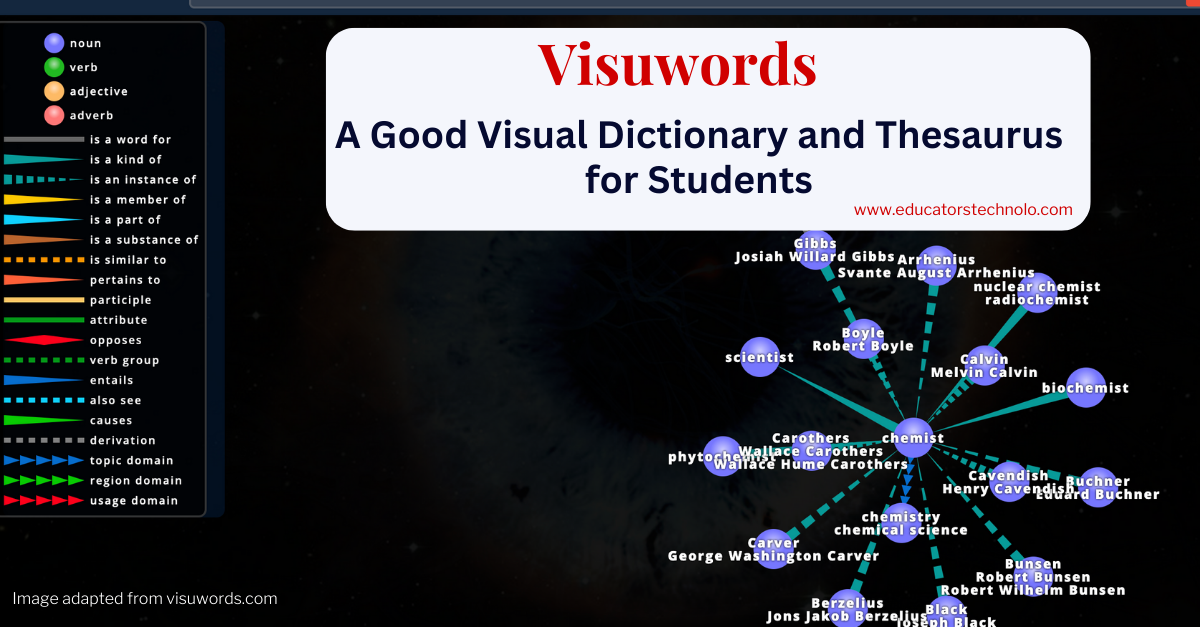Visuwords is both a dictionary and a thesaurus that offers visual representations of words. When you search a word on Visuwords you will be able to access its definition, examples of usage when available, and the term's associations with other words and concepts. I think the strength of Visuwords lies in its ability to visualize word associations allowing users to discover a wide range of related terms and concepts.
Visuword is totally free with the option to donate if you want. Visuwords is also web-based and does not require any software download. No registration or login is required either. All you need is a browser with Internet connection.
Visuwords "uses Princeton University’s WordNet, an open source database built by University students and language researchers. Combined with a visualization tool and user interface built from a combination of modern web technologies, Visuwords is available as a free resource to all patrons of the web."
How does Visuwords work?
The way Visuwords works is simple and easy: type in a word in the 'Visualize a Word' box and hit Enter. An interrelated web of nodes or 'synsets' is generated with the searched word at the center. A synset is basically "a single concept that is represented by a number of terms or synonyms".
Each node is illustrated with a particular colour. For instance, a yellow circle represents adjectives, a pink circle refers to adverbs, a green circle represents verbs, a green dotted line stands for verb group, a green solid line stands for attributes, etc.
When you tap on a node you will view the definition of the word or concept and its synonyms. Some of the definitions also contain examples of usage. Let's illustrate how Visuwords work with the example of the word Language. When you type in Language in Visuwords search box you will get the following visual representation:
Language is at the center with several nodes connected to it. Notice that all of the nodes directly connected to 'Language' are in blue meaning they are nouns or denote nominal relationship. Some of these nodes include: Language Speech, Language Lesson, Language Barrier, Language Requirement, Language Teaching, etc. All of these concepts or synsets are associated with the word Language.
When you hover over a node you will access the definition of the featured synset. For instance, when you hover over the 'Language Lesson' node you will learn that the concept means 'a period of instruction learning a language'.
One node in this visual diagram, namely Language Speech, further connects to two other nodes: a green node denoting verb 'Speak/Talk' and blue node denoting nouns 'Faculty, mental faculty, module'. Again, when you hover over each of these nodes you will view definition of the synset.
My take
Visuwords is definitely a good dictionary and thesaurus tool for teachers and students. It is especially ideal for visualizing word associations and I am adding it to the list of dictionary tools for students. However, I Visuwords is lacking in some useful features that would have made it even more powerful. Some of these features include the ability to track and save search history, create lists of favourite words, share generated diagrams with others, audio pronunciation, among others.



